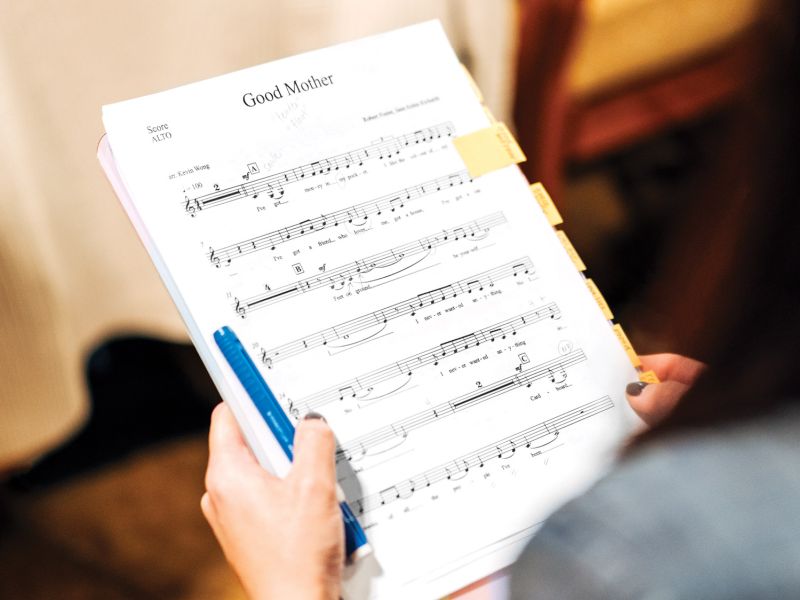Undergrads head south to research the “City of Brotherly Love”

TMU students toured Independence Hall, where both the Declaration of Independence and the U.S. Constitution were debated and signed by America’s founding fathers.
Urban and regional planning undergrads got a firsthand look at the integration of historic heritage and urban revitalization on a six-day field research excursion to Philadelphia, USA.
October is field trip season for TMU planning students — an essential part of experiential learning in the undergrad curriculum. Other student trip destinations this fall included Chicago, Halifax, Montreal, Pittsburgh, and Southern Ontario.
This year, Philadelphia made for an ideal destination right before the U.S. elections. Located in Pennsylvania, it’s one of the seven American “swing state” battlegrounds on which presidential election results often hang in the balance with their equally divided constituency.
The political divide reflects a similar struggle in development, which makes Philadelphia a great place to study for future planners. With a population that has been in decline since the 1950s due to the loss of industry, Philadelphia has lessons for other cities facing the loss of manufacturing jobs and declining opportunities for blue-collar workers.
“Philly has a rich history and strong sense of identity, but after decades of lost population, the city is rebounding while under significant administrative and budgetary constraints,” says Tero Konttinen, a TMU lecturer and trip lead. “Here, you see a lot of non-governmental non-profits stepping up with initiatives to revitalize the city.”

Students explored ways in which Philadelphia balances preservation of its rich historical heritage with the needs and demands of urban revitalization. Pictured here: Dilworth Park, where an aging square next to City Hall was transformed into a sustainable, accessible public space and transit gateway.

Elfreths Alley, the oldest continuously inhabited residential street in America, dating back to 1703.
Multiple locations are also working to “restitch” communities together. The students witnessed a notable example touring Mural Arts Philadelphia, the largest public art program in America. Artists, in collaboration with community members, have created over 4,000 murals — transforming the city’s public spaces and giving voice to diverse communities.

Mural Arts Philadelphia is the largest public art program in America, with over 4,000 murals decorating the city. Students saw firsthand the power of art to create collaboration and transform public spaces.
Philadelphia was also special for professor and trip lead Matthias Sweet, who completed his doctorate at University of Pennsylvania. Students toured his alma mater and studied the dramatic results of the university’s work to engage with and help transform surrounding communities, which had suffered from decades of economic exclusion, systemic racism, and political disempowerment. The University City area is now a healthy, growing and vibrant community that’s now often called Philly’s “Second Downtown”.
Three of the trip participants shared reflections on the trip’s success.

Tero Konttinen
Instructor and Urban & Regional Planning (‘98) alumnus
Why are field trips valuable to the curriculum?
As a graduate of the program myself, I remember the field trips fondly. They were a great learning experience, but also a bonding opportunity with fellow students. Now as an instructor, I feel that the field trips remain an essential part of experiential learning. For faculty, they’re also an opportunity to find out what other cities are doing to deal with city issues.
How do field trips expand students’ perspectives?
While planners do a lot of office work, much of what we do is tangible in the real world. The only way to really understand how a city functions is to see it in person. That’s where the field trips come in. They open the eyes of the students to new experiences and broaden their knowledge on different issues and solutions.

Niki Abdollahi Tanha
Fourth-year undergrad
What was your favourite part of the trip?
The guided tour with Mural Arts Philadelphia! It was fascinating to see how public art is a powerful tool for resilience in the face of gentrification, particularly in Chinatown and North Philly. The murals were deeply intertwined with pressing political and economic themes — such as incarceration and racial discrimination. It was inspiring to witness communities expressing their voices for change through art — transforming public spaces into platforms for awareness and dialogue. That reinforced my belief that development should not only focus on economic growth but also prioritize social equity.
Why do you recommend international experiences?
Three things: I think it’s crucial to broaden your scope socially and politically by going beyond home where you’re comfortable. It was also the best way to network with professionals outside of Canada. Lastly, I found myself mingling and exploring the city each day with new friend groups. That immersed me in other planning topics that I might not have normally pursued with my regular peer group.
Daniel Barkin
Fourth-year undergrad
What was your biggest planning takeaway?
I learned a lot from two non-profit public partnerships — the Mural Arts Program and the Delaware River Waterfront Authority. With supportive policy frameworks and grant funding, both non-profits proved the transformative impacts and possibilities of their projects and partnership approaches. One produced over 4,000+ murals across the city. The other produced heavy infrastructure such as pier park revitalizations, an artist community centre, and capping expressways to build parks and reconnect previously bifurcated communities.
Would you recommend field trips to students?
If you get the chance, take it! You can explore a new city and learn about your profession in a different geographical context. I really enjoyed walking through the city blocks — and also eating at hidden gems that locals told me to check out. The food scene in Philadelphia is definitely worthwhile!


